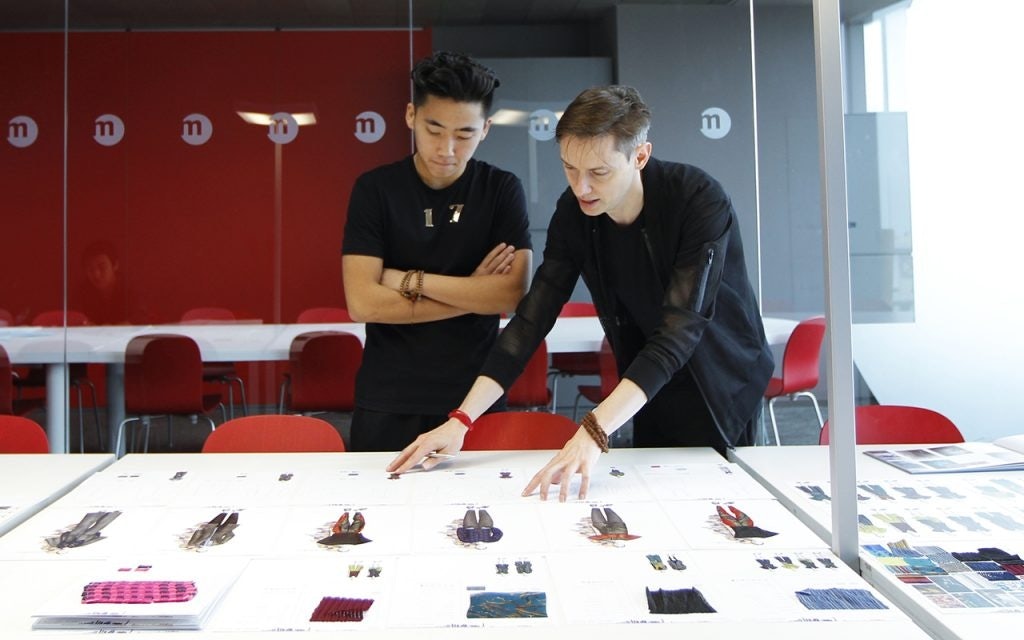Li Chao, a class of 2021 fashion print student at Central Saint Martins, recently returned to his hometown of Nanjing, since the COVID-19 pandemic has put a halt on his summer internship plans. “Everyone is thinking about taking a gap year,” he told Jing Daily. “Why would anyone want to [study] if we can’t use the machinery?”
While much of the focus has been on the pain recent fashion school graduates are feeling due to COVID-19, the outbreak has also affected existing and prospective fashion students. Fashion programs’ business models have been completely upended by the virus, with current students thinking about taking leaves of absence and prospective students deferring their start dates, which has resulted in unparalleled losses of revenue from tuition fees.
The Chinese student population at top fashion schools currently stands between 10 and 20 percent. Li’s class has five Chinese nationals out of 21 students who each pay around £22,920 per year without scholarships or 1.5 times more than home students, the school's website shows. After COVID-19 hit, the British Council stated that the virus would cost UK universities nearly 14,000 students from East Asia, including China, over the coming year, resulting in a loss of £460 million ($565 million) in lost income from tuition and living expenses. The think tank Brookings Institute estimated that California and New York, where art schools cluster, are risking over $400 million and over $300 million due to COVID-19.
Traditionally, fashion capitals like Paris, Milan, New York, and London have been ideal places for Chinese design students to study and live. But due to increasing demand, many top fashion schools have opened campuses in China, including Italy’s Istituto Marangoni, which opened a campus in Shanghai in 2014 and another in Shenzhen in 2016. Meanwhile, Esmod Paris has opened branches in Beijing and Guangzhou. Will the prolonged virus outbreak force other top schools to boost their China exposure?

Repatriation of students in the short and long-term#
Opening a China campus post-COVID-19 might be a viable way to counter a lack of physical classes for a sizable Chinese student body. For some, it might be a way to add revenue while they navigate the uncertainties of a bleak global economy.
Li is among the many Chinese students who returned home, since the majority of universities didn't allow international students to stay on campus. But he’s also lucky to be in placement year while others have to continue with classes despite a 7-12 hour time difference with limited access to machinery or workrooms.
Florence-based Polimoda has reopened the design workshops and the library for students who are still based there, said the director, Danilo Venturi, to Jing Daily in mid-June. As for those who are studying from home, the school provides face-to-face online courses for a live audience, or in playback form for students with large time differences.
In comparison, China started reopening campuses in April as the central government has been imposing digital contact tracing. By mid-June, government data showed that 71 percent of students at all education levels had returned to schools. Given the quick recovery, the Hangzhou-based China Academy of Art, which has a renowned fashion study program, hosted a physical graduation show last week while most of its Western counterparts have been exhibiting their student work online.
Other than giving the Chinese student body physical resources, US schools’ China branches would offer local students security amid rising China-US tensions. On the Chinese question-and-answer site Zhihu, the lasting impact of COVID-19, and potential restrictions on visas like the student work visa Optional Practical Training (OPT), are considerations for Chinese students when thinking about studying abroad.
Schools around the world, especially in countries that don’t have a contact tracing program in place, probably won’t fully recover unless an effective vaccine comes around in 12-18 months, which is the World Health Organization estimated timeline. So, having a China partner or campus would be a good contingency plan, but it could also bode well for the future.
Cooperation is key#
Examples show that working with a local partner — be it the government, business, or faculty — is key to breaking into the Chinese fashion education market. The founding of Istituto Marangoni’s relationship with the Shanghai municipal government came at the 2010 Shanghai World Exposition, the same year that China and Italy celebrated its 40th anniversary of diplomatic relations. It smoothed out the required government procedures, said Istituto Marangoni’s managing director, Stefania Valenti. The school obtained a training license two years later, Valenti said.

Opening schools in China has been getting harder over the years due to an increasing level of restrictions as a result of bad actors posing as Western schools. They even have a name for them: “wild chicken schools” (a slang for non-accredited institutions). Officially, Beijing labeled the accredited joint ventures “cooperative education programs,” which are defined as educational activities targeting Chinese nationals through subjects, majors, and curriculums.
Istituto Marangoni dedicated its success in China to a mix of Chinese and Italian faculty members. “Initially, we sent key alumni that have been teaching many years at our historical Milan school campus back to Shanghai,” said Valenti. “Some of them are still in Shanghai today.” With eight global campuses from Europe to Asia, Chinese business media Yicai reported that the school had a 400% increase in revenue between 2011 to 2019.
One can also gauge the power of cooperation in the case of DeTao Masters Academy. Despite not being founded by a foreign entity, it has been known to bring renowned industry figures to Chinese students. The Advanced Fashion design program is one of the 11 programs DeTao runs in partnership with the Shanghai Institute of Visual Arts, which was set up in 2015 and has been operated by British fashion veterans Jane Gottelier and Patrick Gottelier. Its visiting faculty includes former CSM program director of fashion Willie Walters and celebrated Chinese designer Angel Chen.
Working with the Shanghai Institute of Visual Arts has been a major pillar of DeTao’s success, said Patrick Gottelier. “Without SIVA, I don't think that we could have survived and thrived independently, and we certainly wouldn't have been able to comply with every Shanghai education board rule and regulation, which is essential.”
For Marangoni, it sees its education as a means to help the Chinese fashion industry merge with the West. “China is not only the world’s largest fashion market, but it is also the engine that pushes the luxury segment,” said Valenti. “It’s better to scout for local partners to be more connected with the Chinese fashion system.” She disclosed that the school had been looking for more local partners to cooperatively set up double-degree programs at Marangoni schools in Europe and the UK.
Terence Chu, the CEO and founder of APAX Group and an executive advisor for Shanghai Fashion Week, agreed that it’s beneficial for fashion education systems to merge. “With the fashion industry becoming increasingly globalized, it’s a good thing to open fashion schools in China so that local talents, including designers and those who are interested in fashion, can acquire professional training,” he said, citing Marangoni’s training in China as the exemplar of blending Chinese and Western fashion educations.
Chu believes that there will be more campuses from Western fashion schools in China soon, but they might need to modify the curriculum to teach Chinese students more than just design. “Many talents have learned about design and creativity, but they would need a lot more than that to start their own brands,” he said. “A lot of them are not clear about businesses, and they can benefit from professional training such as business management.”
Despite the potential financial return, some top fashion schools are adamant about how this might affect their international students’ experience. “Polimoda will not open subunits in any country,” said Venturi, adding that its decision comes from the fact that the Florentine territory is highly connected to the school’s teaching experience. The Renaissance city houses renowned museums like the Uffizi Gallery and the Palazzo Vecchio, important trade shows such as Pitti Uomo, and is the birthplace of luxury brands like Gucci and Salvatore Ferragamo. “Opening a Polimoda location without giving students these unique experiences would defy our content-driven and human-centered vision,” Venturi said.

Ultimately, top fashion schools’ decision to open campuses in China may have less to do with the global pandemic and more to do with their relevant long-term business and branding goals. Some like the New-York-based Parsons School of Design may not have announced a firm plan for China campuses, but it started testing the waters with summer programs alongside local partner CR Land, which is a real estate group. Parsons’ first pre-college summer school in China costs 49,800 yuan ($7,032) for 21 days and will take place in Shenzhen next summer, according to a CR Land spokesperson. Parsons did not respond to inquiries for this story.
Li, the CSM third-year student, thinks there’s investor interest in his alma mater, but he doesn’t think the school is enticed, at least for now. “I don’t think my school has any near-future plans to open campuses in China,” he said. “It would first want to ensure its education quality, as our education system is completely different from China’s.”
